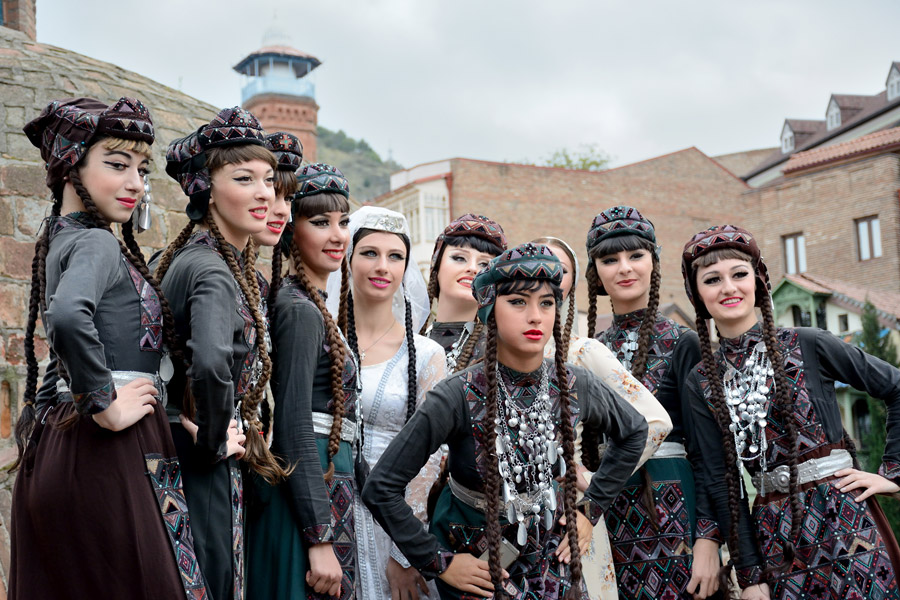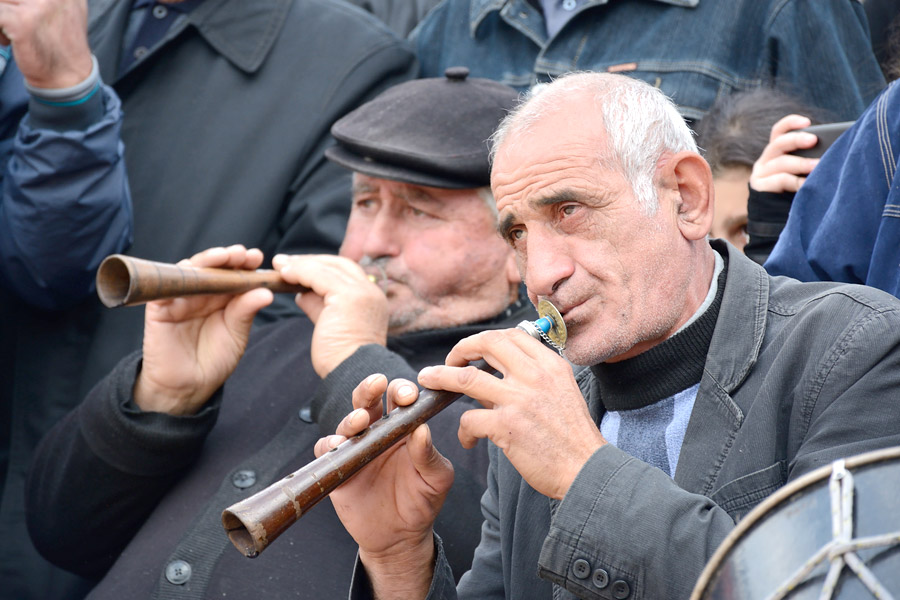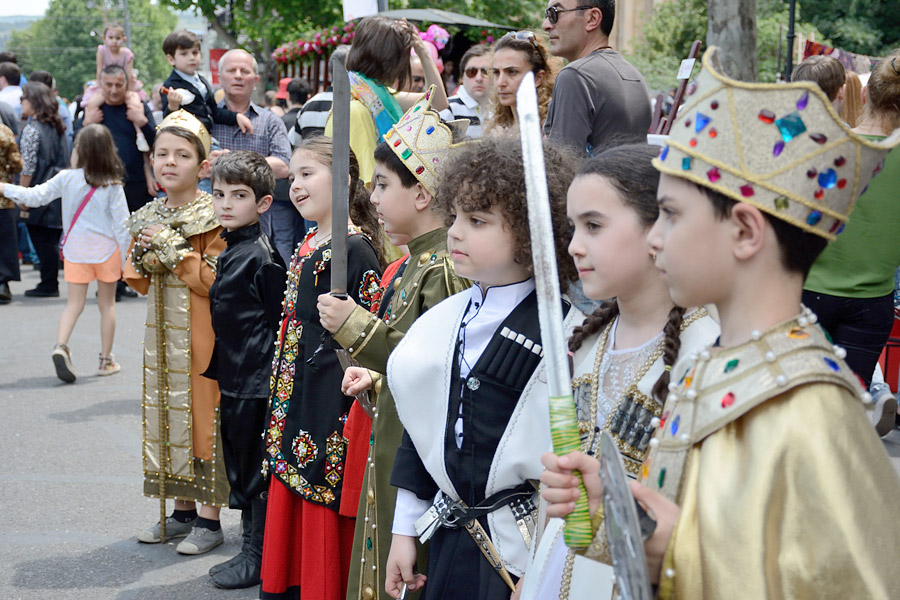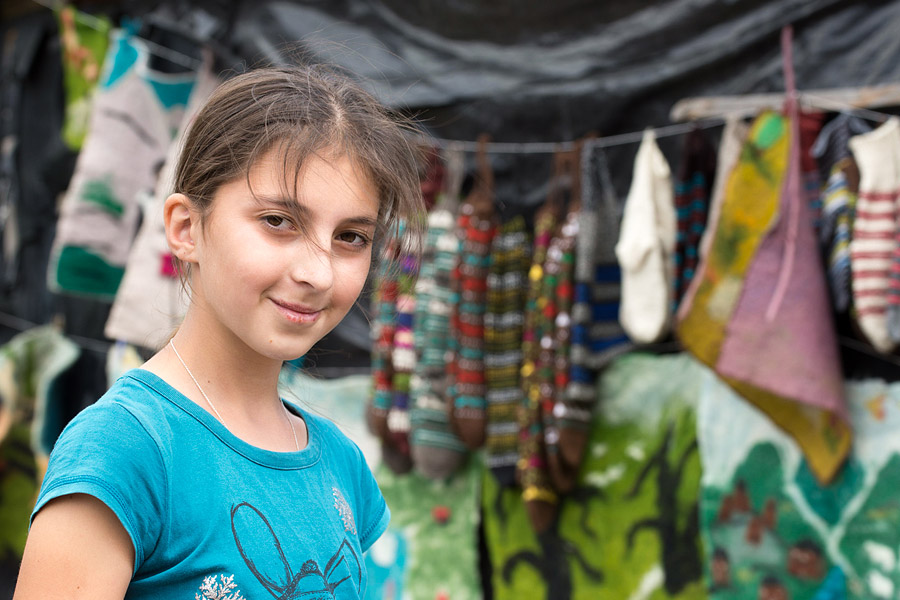Georgian People

The majority ethnic group in Georgia is Kartveli which comprises the largest portion of Georgia’s 3,700,000 people. Other distinct ethno-linguistic groups found within Georgia include Svans (in the northwestern region of Svaneti) and Megrels (in the western region of Samegrelo). The Laz are another separate ethno-linguistic group primarily inhabiting present day Turkey, though some are found in the southwest regions of Adjara and Samskhjavaxheti.
While these four ethnic groups speak their respective distinct languages, they are all classified as members of the Kartvelian language family which is unique among the primary language families of the world. Other distinct languages belonging to Northwest Caucasian and Northeast Caucasian language families are also spoken in the remote areas of the Greater Caucasus Mountains along the northern border.

Different dialects of the Georgian language are spoken in their respective regions which include, Adjaran, Gurian, Javakhetian, Imeretian, Rachan, Khevsurian, Tushi, Kartli, Shida Kartlian, Qvemo Karlian and Kakhetian. The major cities of Tbilisi, Batumi and Kutaisi have their respective dialects as well. Most are mutually intelligible among Georgians.
Small but significant enclaves of the Georgian Diaspora are found in Moscow, Brooklyn, Washington D.C., Paris, and in Greece, Turkey, Armenia and Iran.
The total number of Georgians in the world is about 4,000,000.
Ethnicity and regional diversity of Georgian people

Georgians are the descendants of tribes having migrated from Anatolia which populated present day Georgia. The ethnic nucleus of the Georgian people is an amalgamation of three important related tribes: Karts, Migrelo-Zans and Svans. A singular Georgian identity began to take shape in the first centuries of the 1st millennium BCE. The main factors which influenced the formation of the Georgian ethnos were: strengthening of the Iberian state in the first and second centuries CE; adoption by the Georgians of Christianity in the IV - VI centuries; creation of the Georgian written language.
The ethnic Georgian formation was essentially completed in the 6th – 10th centuries. This period is characterized by the strengthening and predominance of the Georgian language, as well as the establishment of a state territory and apposite cultural development.
Over a period of many centuries, Georgians were engaged in agriculture and livestock cultivation. Cattle breeding predominated in the mountains. In the foothills, this was combined with the developed agriculture which was the main economy of the plains. These traditions of agriculture shaped, and are closely associated with, national Georgian identity as it is known today.

Each region of Georgia is known for its individual ethnic characteristics:
Gurians are lauded for their optimistic disposition and light hearted humor.
Megrelians are admired for their shrewdness and business acumen.
Imeretians are renowned for their communicative panache.
Kakhetians have a reputation for their agricultural inclination.

Svans are known, especially among Georgians, as adept hunters and mighty warriors with strong insular tendencies.
Rachans are known to be highly skilled shepherds able to traverse the slopes of the Greater Caucasus Mountains with ease.
The people of Mtskheta-Mtianeti are hardcore mountaineers, highly sought after guides for tourists and Georgians alike.
The urbanites of Tbilisi are internationally known for their seemingly limitless hospitality and openness to foreigners.

Adjarans are known for their adherence to traditional ways for life while remaining incredibly tolerant to other cultures and religions.
The people of Shida Kartli are revered for their resilience and persistence in the face of adversity.
Kartli, Qvemo Kartli and Samkhjavaxeti are considered to be the most culturally and ethnically diverse regions of Georgia.

